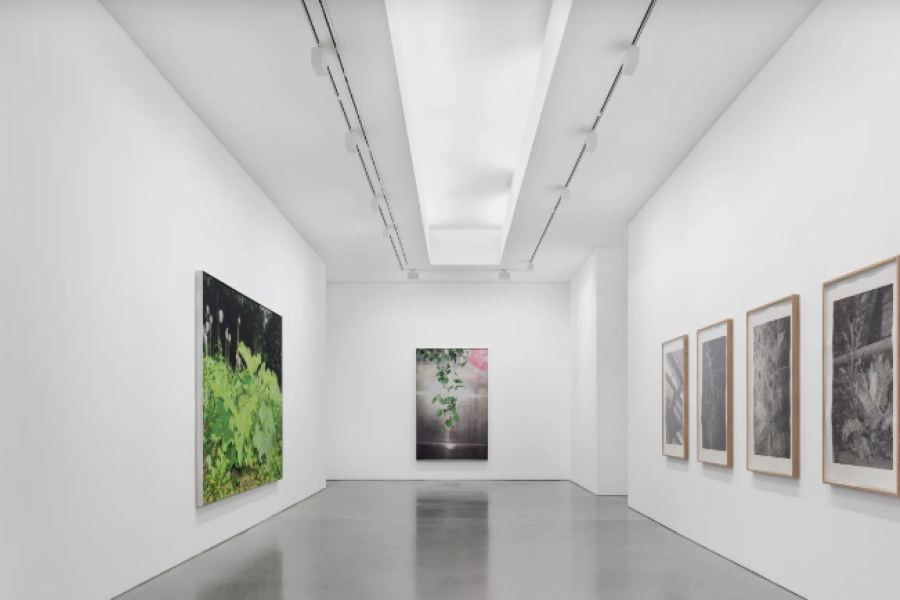Galerie Thomas Schulte presents "Naturphilosophie", an exhibition of new works by David Hartt. For his second solo exhibition at the gallery, Hartt expands on an ongoing body of work, continuing his engagement with themes related to dominant systems of knowledge and representation, and corresponding processes of marginalization and displacement. Reproduced as photogravures or translated as tapestries, the works comprise images of plants photographed at various sites in northern Europe —in the Netherlands, Sweden and Germany. Bringing these peripheral, non-human agents into focus, the images reflect on how our environment, and the life present in it, has been shaped by human activity and ideals of the past—as well as their resonances today.The sites visited and photographed by Hartt for the works on view—among them, the historic university cities of Leiden, Uppsala and Göttingen—were informed by the work of artists and early naturalists active there, primarily, but not exclusively, during the 18th century. Through mostly close-cropped, nondescript views, however, locations are kept from being fully identifiable in the images. Their titles are the primary indicator, parenthetically noting the city and date of the photograph, as well as the scientific names of the plant species featured in it. Documents of a place and a specific moment in time, they also refer to and enact a process of naming. Swedish botanist Carl Linnaeus, known as the “father of modern taxonomy” for having formalized the binomial nomenclature system in 1753, is also associated with three of the cities in which the photographs were taken. The presence of such figures puts the images in dialogue with European artistic and intellectual traditions in and around this period—a period also marked by European colonization and its effects, including the movement of flora, fauna and human communities.
 Impressions of the exhibition "David Hartt, naturphilosophie" at galerie Thomas Schulte (c) Stefan Haehnel - Mit freundlicher Genehmigung von: galeriethomasschulte
Impressions of the exhibition "David Hartt, naturphilosophie" at galerie Thomas Schulte (c) Stefan Haehnel - Mit freundlicher Genehmigung von: galeriethomasschulte Impressions of the exhibition "David Hartt, naturphilosophie" at galerie Thomas Schulte (c) Stefan Haehnel - Mit freundlicher Genehmigung von: galeriethomasschulte
Impressions of the exhibition "David Hartt, naturphilosophie" at galerie Thomas Schulte (c) Stefan Haehnel - Mit freundlicher Genehmigung von: galeriethomasschulte